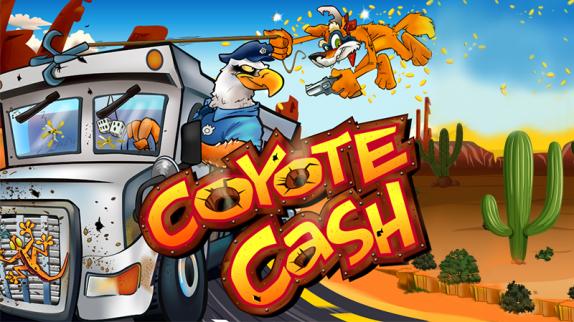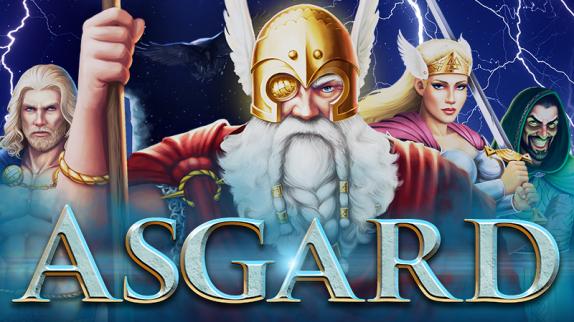Meeting with Red Dog Casino
Red Dog casino legit, founded in 2019, has entered the dynamic realm of online casinos to stand out in the vibrant real money gaming arena. Operated by NFINITY MEDIA GROUP LTD, this casino has gained recognition on reputable review platforms and in player communities.
Red Dog casino online is licensed by the government of Curaçao, and has made a name for itself in the short time it has been in existence. Offering a diverse gaming experience, innovative approaches and top-notch customer service, this website, like other Red Dog casino sister sites became a popular choice for players looking for quality entertainment. At RedDog casino login players are greeted with an extensive range of exciting games. Working with renowned software providers provides a rich diversity of game content that satisfies the preferences of every gambling enthusiast.
Transparency and reliability are key aspects that increase the attractiveness of the casino. Having a Curacao license shows the casino’s commitment to adhering to industry standards. Don’t worry about is Red Dog casino safe, as it prioritizes security and privacy, using advanced encryption technology to protect players.
Also adding to the excitement are the enticing Red Dog casino bonuses and promotions. New players are welcomed with Red Dog casino welcome bonus and encouraging loyalty, the casino makes sure that every guest feels valued. Bonus offers include extra funds, Red Dog casino 50 free spins no deposit and much more.
Red Dog online casino delivers a thrilling gaming experience characterized by bright and modern website, intuitive interface and responsive support team. Are you ready to enter the world of gambling? Get extra winnings with Red Dog casino 100 no deposit bonus codes, and start an exciting journey into the world of gambling and big wins! More information you will learn from this Red Dog casino review.
-
Red Dog Games: Meet The Best Games
Discover Red Dog casino real money, which offers an exciting array games that will appeal to even the most experienced gambling enthusiasts. Despite its medium size, the casino boasts a diverse selection of games, so there’s plenty to suit every player’s tastes. Let’s continue with the Red Dog online casino review, and you can find out what games are waiting for you.
- Slot Games;
- Progressive jackpots;
- Specialty games;
- Video Poker;
- Table Games;
- Live Dealer.
The Red Dog online casino gaming collection is a multifaceted realm of gambling entertainment. Whether you’re leaning towards slots, table games, live dealers or progressive jackpots, you’ll find an extensive selection here for an exciting gaming journey. Discover the best of RedDog gambling and immerse yourself in a dynamic world!

Open the Doors to the World of Exciting Slots
Embark on an exciting journey into the realm of excitement at Red Dog Casino, slots take the spotlight with a remarkable collection of over 140 creations from renowned provider Realtime Gaming (RTG). Within this varied lobby, players will find not only exciting slots, but also true masterpieces of the genre. Let’s dive into the fascinating world of Red Dog casino online slots.
While RTG serves as the exclusive provider of slots, there is no need to be worried. With a portfolio of over 140 games, RTG guarantees players unrivaled variety and quality. From classic slot machines to the latest innovative video slots, there’s something to suit every player’s taste.
Red Dog casino online carefully researches popular themes to meet the expectations of even the most discerning players. From the glamor of ancient Egypt to the captivating realm of cinematic masterpieces, every player will find a slot that will capture their imagination. The combination of realistic graphics and exciting storylines and the availability of Red Dog casino bonuses ensures a unique gaming experience.
Having allocated a special place for progressive slots, Red Dog casino log in and compete for the jackpot. In games like Aztec’s Millions, jackpots soar to astronomical heights, spurring players’ excitement in the pursuit of millions. In the world of progressive jackpots, Red Dog casino games such as Megasaur, Spirit of the Inca and Jackpot Cleopatra’s Gold stand out. Also take advantage of Red Dog casino free spins that will help boost your bankroll.
However, mirroring the approach of other RTG casinos, Red Dog Casino has yet to introduce a free play mode into its gaming repertoire. Nevertheless, for those eager to partake in the Red Dog casino game experience, leveraging bonuses and free spins serves as a launching pad for their thrilling journey.
Thus, within the online realm of Red Dog Casino, each player steps into the dynamic domain of slots, characterized by diversity, top-notch quality, and exhilaration. Uncover the finest RTG creations, submerge yourself in captivating storylines, and savor the excitement of gambling. Red Dog casino no deposit bonus and free spins eagerly await you, enhancing the thrill of your gambling expedition.
Immerse yourself in the Wonderful World of Table Games
When delving into table games at casino Red Dog, a captivating assortment greets every player. The casino boasts over 25 timeless games, spanning blackjack, roulette, poker, and baccarat. Beyond the conventional, this online gaming hub incorporates RNG variations of craps and keno, ensuring a diverse and exhilarating gaming venture.
Alongside the classic table offerings, discover thrilling shooting games, scratch cards, and other dynamic table entertainments. Immerse yourself in this dynamic realm of excitement, relishing abundant chances for enthralling gaming sessions.
An Explosion of Excitement with Game Bonuses and Exciting Promotions!
Red Dog Casino offers a unique experience from the moment you sign up and throughout your gaming journey. One of the main aspects that catches the attention of players is the Red Dog casino sign up bonus. As you begin your journey, you are confronted with five exciting deposit match offers as well as a huge RedDog no deposit bonus available for new members.
An unforgettable journey is promised here from the moment you Red Dog casino sign up and throughout the entire gameplay. The features that attract the attention of the players are Red Dog casino free spins no deposit. The start of your journey begins with five enticing offers and an impressive Red Dog casino no deposit bonus designed for new members.

What sets Red Dog Casino’s offerings apart is their variety, catering to different player preferences. Slots enthusiasts, for example, can explore customized Red Dog casino bonuses, while other options are a mix of free spins and deposit bonuses. Among the impressive bonuses, Red Dog no deposit casino bonus codes for existing players stands out.
The distinguishing factor is the remarkable match percentage. While many online casinos double your initial deposit, Red Dog Casino goes further by offering a 225% match applied to all of your first five deposits. It is this kind of Red Dog casino bonus that brings excitement to your journey. The platform not only offers a variety of entertainment, but also strives to make the start of your gaming experience exceptionally enjoyable.
The generosity is not just limited to the welcome Red Dog casino bonus. Regular player promotions, no deposit bonuses and Red Dog casino bonus codes are integral elements of the casino’s approach to creating an original and inspiring experience for customers. Dive into the atmosphere of excitement with Red Dog Casino, where bonuses await you at every turn and promotions multiply your gaming adventure. Take advantage of Red Dog casino no deposit bonus codes and enjoy the thrill of victory!
Mobile Version: Gaming Is Always at Hand

After Red Dog casino login, you are provided with a unique gaming experience that has been made even more accessible with the latest updates to the site. One of the key changes was the adaptability setting, which made the site perfectly suited for comfortable use on any mobile device – be it a phone or a tablet.
Now you can enjoy the wealth of various games, participate in the exciting Wheel of Fortune, dive into the loyalty program and get Red Dog casino bonus using devices with iOS and Android operating systems. Your wins will become more exciting with the opportunity to get extra spins and Red Dog casino free chip.
Red Dog casino app is highly functional and has passed all tests perfectly. It works stably on both iOS and Android devices without causing crashes, errors, freezes or other performance issues. This means that players can enjoy mobile casino without any interference while getting Red Dog casino no deposit bonus.
In order to start playing on your mobile device at Red Dog Casino, you just need a stable internet connection and a working browser. The convenience and ease of use of the mobile version will allow you to always have the opportunity to plunge into the world of gambling anytime and anywhere. Every new player can take advantage of favorable offers by getting Red Dog casino 100 free spins.
The mobile version of Red Dog online casino opens the doors to the world of gambling entertainment, where convenience, bonuses and the ability to play at any time make your experience unique. Immerse yourself in the exciting world of casino right now and enjoy the excitement of gaming always at your fingertips.
Security and Support: Taking care of Users
If you are worried is Red Dog casino legit? Then Red Dog online casino takes care of the safety and satisfaction of its players by providing diverse and effective support methods. The casino offers access to support through three main communication channels: live chat, email and phone.
The live chat option stands out as the quickest mode, with proficient agents typically responding to queries within an impressive 30-second timeframe. With this array of communication methods, every player can opt for the most convenient and effective way to seek assistance. This swift support guarantees that players’ questions are addressed in the briefest time possible.
Online casino Red Dog support team gives customers a choice in communication, providing the freedom to choose the most convenient way to communicate. Security at Red Dog Casino is a priority. The SSL technology used ensures that personal information and financial transactions are protected from possible interception and abuse.
Red Dog casino legit is licensed by the government of Curacao, one of the leading regulatory bodies, which confirms its legality and adherence to gambling industry standards. Security, legality and quality support make Red Dog Casino a reliable partner for everyone who values comfort and confidence in their online casino. Enjoy playing in a safe and supportive environment while taking pleasure in a variety of opportunities in the form of Red Dog casino promo codes.
Banking Options at Red Dog Casino
Managing your funds at Red Dog Casino is a straightforward and user-friendly procedure. The casino provides an array of banking options that encompass the primary methods, excluding e-wallets. However, withdrawal limits pose restrictions, and regrettably, they may lack flexibility. To illustrate, the Bitcoin withdrawal limit is capped at $2,500, with other methods possibly having comparatively reduced limits.

RedDog casino supports transactions via various bank cards such as Visa, Mastercard and Maestro. Skrill and Neteller e-wallets are also available, as well as payment processors such as ecoPayz. The casino also accommodates different preferences by allowing deposits via Qiwi and Yandex.Money e-wallets.
Ensuring the security of financial transactions, Red Dog casino online instills confidence in players by utilizing advanced SSL encryption technology to protect their data. The casino prioritizes user convenience and flexibility of payment methods, aiming to simplify the gaming process and minimize the complexity of financial transactions. All these factors combine to make Red Dog online casino real money a reliable choice for those who value the simplicity and security of online casino banking.
Conclusion: Your Journey into the World of Red Dog Casino
To summarize this Red Dog casino review, it is an attractive choice for the player, offering not only a diverse selection of exciting games, but also providing secure and diverse options for both deposits and withdrawals. The casino actively protects players’ financial information by utilizing advanced SSL encryption technology.
Several notable aspects contribute to RedDog casino appeal to new players. The availability of generous welcome bonuses, including the opportunity to receive no deposit bonus codes for Red Dog casino, increases the attractiveness of starting one’s journey at the casino. In addition, the inclusion of RedDog casino bonus codes serves as an added incentive to participate.
A distinctive feature of Red Dog Casino is its legal status, confirmed by the relevant license. This instills a sense of trust in players, creating an atmosphere in which they can enjoy the excitement, confident that the casino adheres to high standards of security and fair gaming. So from this RedDog casino review, you could see that here you will find an exciting and safe gaming experience, with enticing bonuses for all its visitors. Register and get RedDog promo codes to start playing.
Red Dog Casino: Clarification of Nuances and Answers to the Hottest Questions of the Players
Is Red Dog Casino a reliable platform for gaming?Certainly, Red Dog Casino ensures the security of your personal details and funds, adhering to legal standards. The casino possesses a valid license issued by the Government of Curacao, assuring players that their winnings can be effortlessly withdrawn from their gaming accounts.
What gaming alternatives does Red Dog Casino offer?Upon enrolling at Red Dog Casino, players unlock access to a diverse range of games, encompassing online slots, classic slots, jackpot slots, and 3D slots curated from numerous providers. Additionally, the casino features card games, roulette, video poker, instant games, scratch cards, and live dealer games.
What sets Red Dog Casino apart as an enticing option for online enthusiasts?Red Dog Casino distinguishes itself as an appealing choice due to its extensive array of exhilarating games and secure transaction methods. The casino prioritizes the protection of players’ financial data by employing cutting-edge SSL encryption technology.
What types of welcome incentives await newcomers at Red Dog Casino?Fresh entrants to Red Dog Casino are greeted with generous bonuses, including the opportunity to acquire 100 free spins. Furthermore, the casino presents no-deposit bonus codes and free chips, augmenting the allure for those embarking on their gaming journey.




